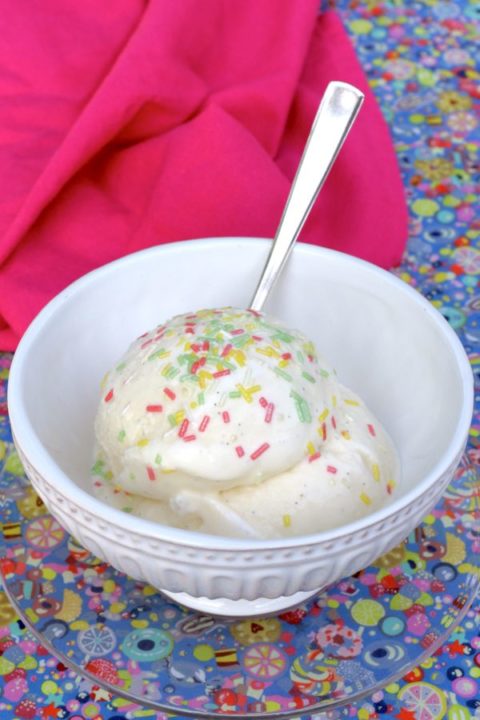 This is a Mary Taylor Simeti interpretation of Sicilian ice cream, as made by her neighbourhood gelato maestro in Palermo. She painstakingly reproduced it at home so she can, in her words, “survive when he closes down for winter…”.
This is a Mary Taylor Simeti interpretation of Sicilian ice cream, as made by her neighbourhood gelato maestro in Palermo. She painstakingly reproduced it at home so she can, in her words, “survive when he closes down for winter…”.
This delightful gelato meets with raptures in our house, too, for it recaptures the lost taste of my beloved’s favourite childhood ice cream, and that of his parents’ before him, which was made in the industrial Midlands town of Belper in Derbyshire by a family of Italian immigrants. The story is this: Giuseppe (Joe) Corrado was sent to Belper as a WWII prisoner of war. He stayed on to marry a local woman named Mary Mazza, whose Italian immigrant father had started Mazza’s Ices in 1928, selling scoops from a hand cart. Together Mary and Joe ran the family business after the war from a tiny shop that opened through a serving hatch onto a cobbled lane up from Belper Junior School. In operation for just those months between the clocks going forward and then back again, vanilla was the only flavour they made, and it was all anyone could have wished for, served at that delectable point of perfect softness in little cups, or cones, or sandwiched between plain wafers.
I was lucky enough to taste Mazza’s ice cream myself, as I came onto the scene a few summers before Joe and Mary finally retired in the early 1990s, after 45 years of charming generations of locals. I was among thousands of fans who adored the purity and texture of this heavenly treat at a time when dairy ice cream was still a rarity in Britain, and its taste lingered long in my memory, too. Imagine the joy when I finally discovered how they may have worked such magic. The secret I thought so elusive was down to the quality of a few simple ingredients.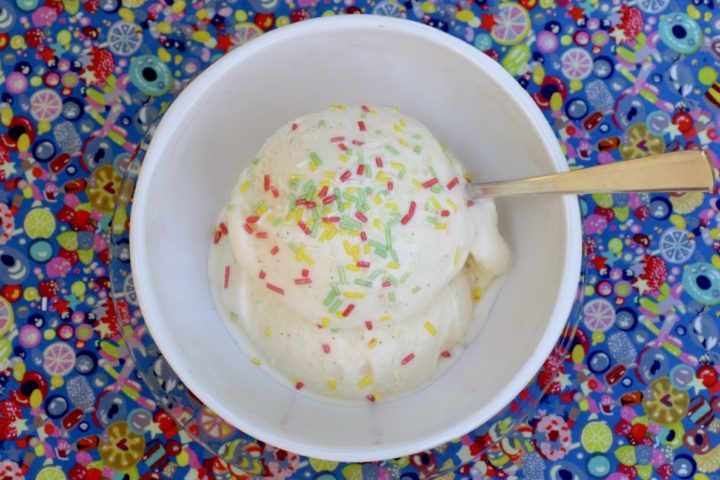 The family declined to sell on the recipe when they closed shop, so I’ve no guarantee that Mazza’s recipe conforms to this one. But I do know that the recipe I share here duplicates the ice cream of my memory, and my Derbyshire family’s, all of whom remember it like it was yesterday. It even melts in the same way, we all agree.
The family declined to sell on the recipe when they closed shop, so I’ve no guarantee that Mazza’s recipe conforms to this one. But I do know that the recipe I share here duplicates the ice cream of my memory, and my Derbyshire family’s, all of whom remember it like it was yesterday. It even melts in the same way, we all agree.
I have now made this gelato many times, and it is our favourite vanilla for its pureness of flavour and of course its creamy texture. This Sicilian gelato (unlike a French vanilla ice cream), is made mostly with milk, enriched with just a modest amount of cream, and thickened with cornflour (aka cornstarch), which may surprise you (as it did me). This produces the characteristically smooth gelato texture in the absence of a higher proportion of milk fats. Unusually for a Sicilian gelato, according to Mary Taylor Simeti, the vanilla version also contains one egg yolk (many have none). This is fewer than you typically find in a custard-based French vanilla.
Proper artisanal gelato is churned at a slower speed than commercial ice creams, so less air is introduced, making the mouthfeel creamy and substantial and exquisitely lick-able — it lingers seductively on the palate rather than disappearing into nothingness — while the lower fat content makes it more refreshing than richer ice cream.
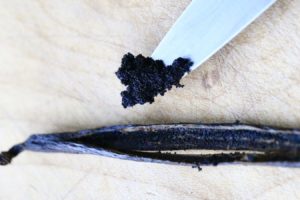
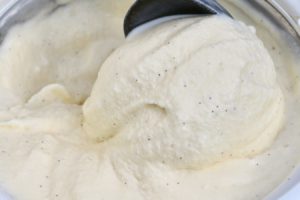 Making it at home is a two-stage operation: the base is easily made on the stovetop by infusing milk and cream with a vanilla bean, sweetening it, and then lightly thickening the mixture with cornflour and the single egg yolk. The base is then chilled for several hours or overnight until ready to churn. I find that my cheap and cheerful home ice-cream maker gets excellent results.
Making it at home is a two-stage operation: the base is easily made on the stovetop by infusing milk and cream with a vanilla bean, sweetening it, and then lightly thickening the mixture with cornflour and the single egg yolk. The base is then chilled for several hours or overnight until ready to churn. I find that my cheap and cheerful home ice-cream maker gets excellent results.
I beg you to try it. It’s a real family recipe, so versatile and delicious whether unadorned, or served in the obligatory cones with sprinkles for the kids, or with a jolt of espresso for the adults as the perfect after-dinner affogato. And of course it’s the crowning glory of a slice of homemade fruit pie. Summer in one.
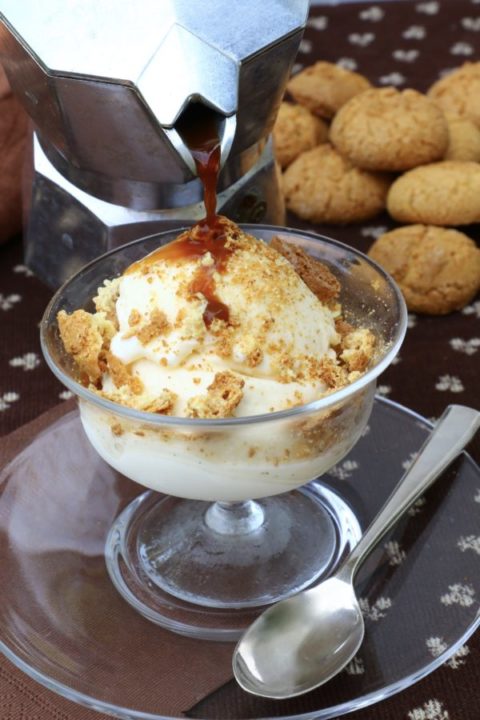
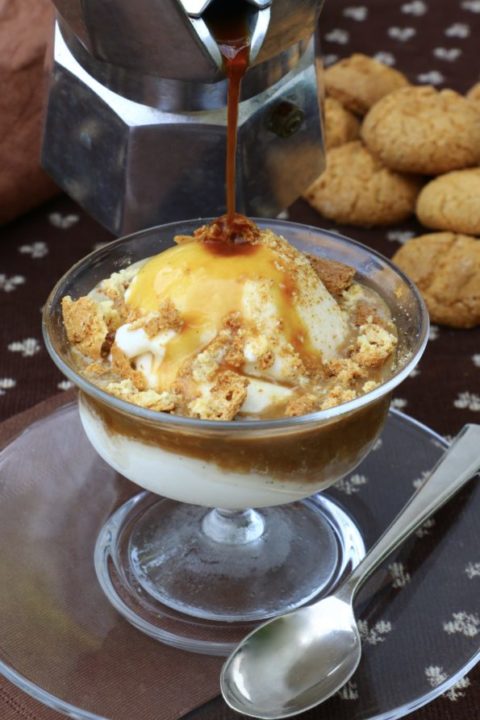
Note: There are many testimonials to Mazza’s ice cream in Belper newspapers of the time, and even now, as fans reminisce about it with great affection. To quote one Belper man: “…The BEST ice cream I’ve EVER had was from a tiny local shop, Mazza Ices, which was set up an run by an Italian family in the 40’s in my home town of Belper, Derbyshire, UK. They’re long gone now sadly …, but I STILL remember the incredible, unique flavour and quality of their amazing ice cream. It was truly sublime.”
Sicilian vanilla gelato
Makes 1 litre (a generous US quart)
Adapted from Mary Taylor Simeti’s Sicilian Food* (Grub Street, 2009)
You will need an ice-cream machine to achieve the desired texture, but a simple model with a freezable bowl works well.
(*I noted an apparent inconsistency in Mary’s conversions from metric, so I’ve repeatedly tested the recipe and found the measurements presented here work every time.)
Ingredients:
- A total of 850ml full-fat whole milk, to be used in two stages as explained in the directions (this is a total of 29 US fluid ounces, or 3 US cups plus 1 generous 1/3 cup)
- 225ml double (heavy cream) (7½ fluid US ounces or 1 fluid US cup minus 2 scant tablespoons)
- 1 vanilla bean (or 1-2 teaspoons good vanilla extract or vanilla bean paste, to taste)
- 350g (1¾ cups) sugar
- 30g (4 level tablespoons, fairly packed) cornflour (cornstarch)
- 1 egg yolk
Directions:
- Combine 700ml (2¾ US fluid cups) of the milk, along with all the cream, in a medium saucepan. Set aside the remaining 150ml milk (nearly ¾ fluid US cup) in a small bowl and keep it cool; this will be used to dissolve the cornflour/cornstarch later.
- Split the vanilla bean lengthways on a chopping board using a sharp knife, and scrape the seeds out by running the tip along its length. Add the seeds and the scraped pod itself to the milk and cream in the saucepan, and stir gently to distribute the vanilla seeds. (If using vanilla extract instead of a vanilla bean, don’t add it until the mixture is cooked).
- Over medium heat, bring the milk and cream mixture gradually to just under the boiling point, when it begins to form a skin. Remove from the heat for a moment and stir in the sugar while the milk mixture is still hot; give it a few gentle stirs to help the sugar dissolve.
- Measure the cornflour/cornstarch into the remaining milk in the small bowl, and stir until smooth; the milk should be cold or a little cooler than room temperature; adding hot milk straight to the starch would cause it to clump.
- Stir the milk and cornflour mixture into the hot, sweetened milk and cream, and return the saucepan to medium heat. Bring it just to the boiling point, gently stirring and scraping sides and bottom with a silicone spatula (or spoon) all the while. It should thicken quickly to the consistency of light cream — just thick enough to coat the back of your stirring implement and leave a clean track when you run your finger through.
- Allow the mixture to cool to just warm, and remove the vanilla bean, making sure to scrape all its seeds into the mixture (see tip, below**). Now stir the egg yolk well into the just-warm mixture so it is well incorporated. Strain the mixture into a bowl or pitcher, ideally one with a pouring spout. If you are using vanilla extract or vanilla bean paste, add it now, to taste.
- Chill the finished gelato base for several hours or overnight before churning in your ice cream machine until thickened. Transfer the churned gelato from the ice cream maker into a freezer container, and let it season in the freezer for an hour or two if it needs to be a bit firmer.
- Serve the gelato when it is easy to scoop. If it is frozen hard, allow it to soften at room temperature for some minutes.
For tips and serving ideas, see below the dripping cone:
 A few tips:
A few tips:
**1. You can save the vanilla bean to use for flavouring sugar. Simply rinse it well, allow it to dry completely, and store in a sealed jar with some sugar. As long as the bean still has a vanilla fragrance it will add a delicious vanilla flavour to the sugar, for use in all kinds of baked goods, or your next batch of gelato vaniglia.
2. For making a post-prandial affogato, you can, if you wish and have the freezer space, scoop the ice cream into serving dishes and freeze until ready to use. Simply pour over a good shot of strong black espresso when it’s time to serve. A crumbled amaretti biscuit on top adds a lovely texture. This is a great finish to an Italian meal.
3. When perfectly softened, the gelato can be piped into cones through a pastry bag fitted with a large star-tip. Hold the cones stable in a drinking glass if you’re doing this unaided. British fans will recognise the childhood favourite novelty, the ‘ninety-nine’, which has to be a vanilla cone with a milk chocolate flake stuck into it as a special extra. Sprinkles (or as they’re known in Britain, ‘hundreds and thousands’), are optional, but seldom refused.
For other Sicilian recipes and stories on Crumbs on the Table, see:
For other frozen ices on Crumbs on the Table, see:
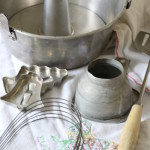


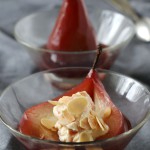

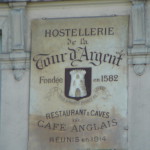 Tour D’Argent: a remembrance of things past at today’s prices
Tour D’Argent: a remembrance of things past at today’s prices Apricots, les abricots
Apricots, les abricots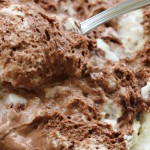 I used to cook in a piggery
I used to cook in a piggery




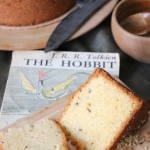 Seed cake and story
Seed cake and story


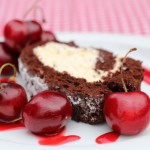







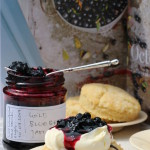
 Easter is late this year
Easter is late this year
Leave a Reply